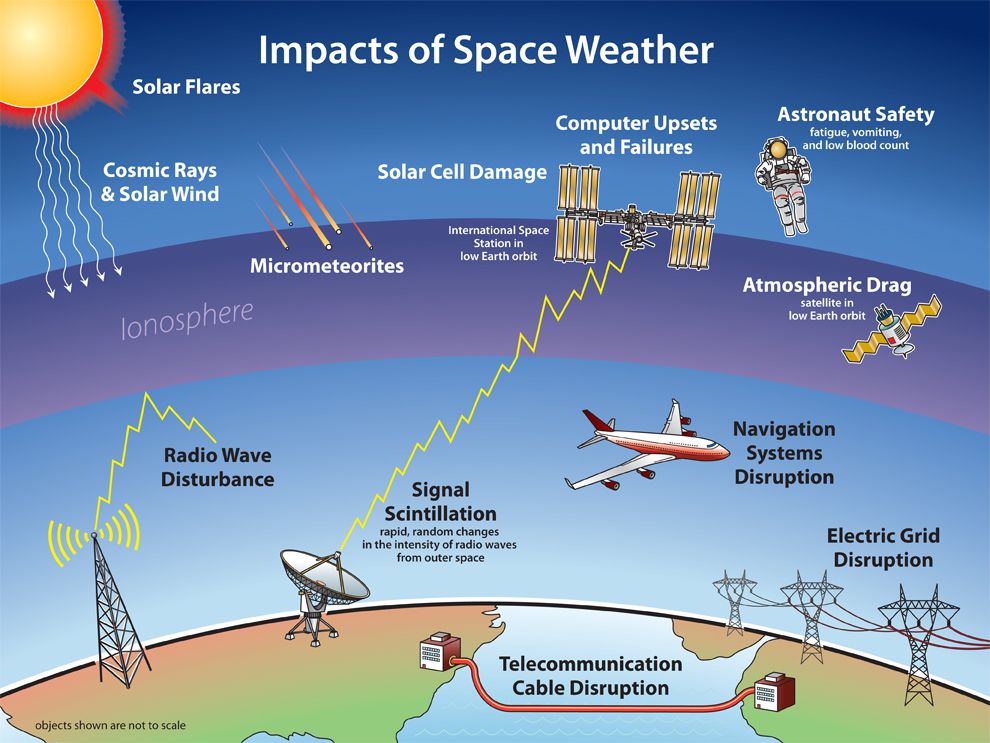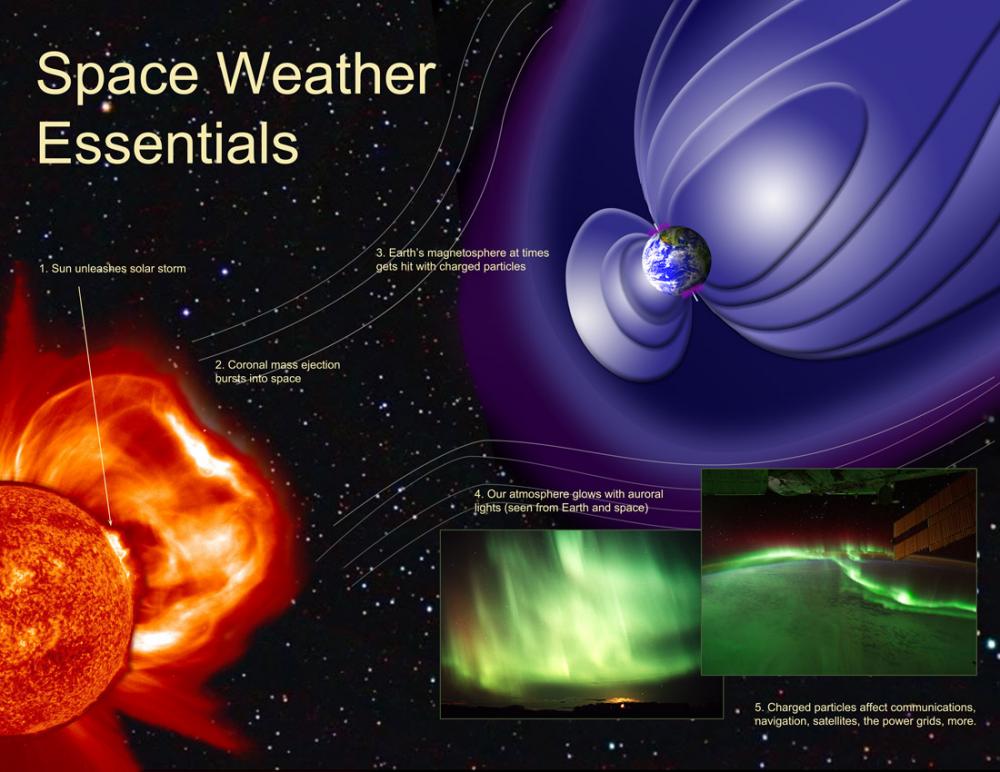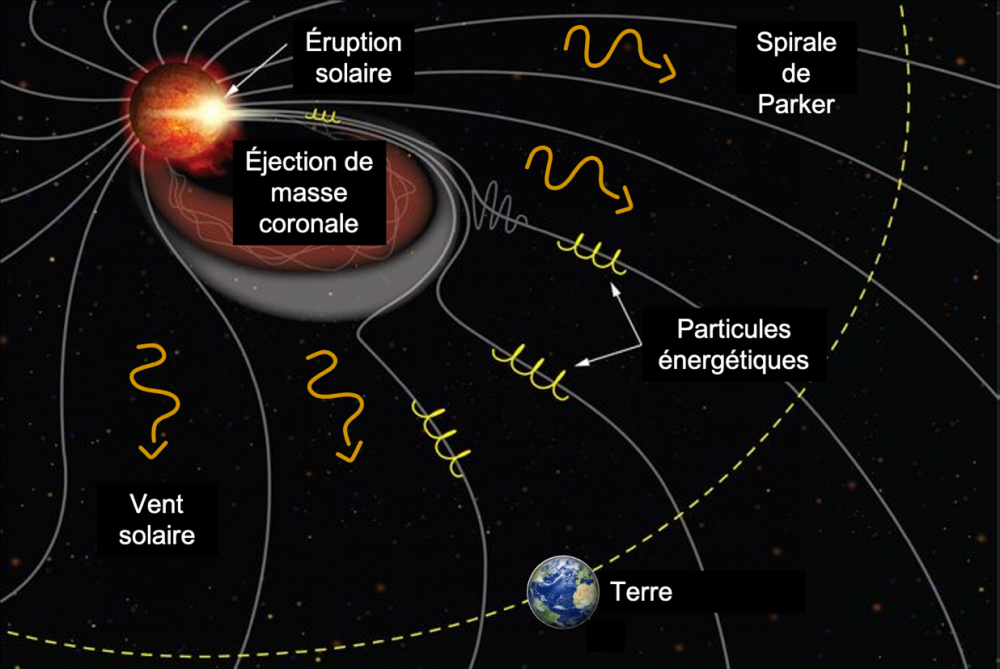Barbara Perri, an astrophysicist at Irfu's Astrophysics Department and an expert in space weather, has been awarded an ANR contract for the WindTRUST project, which aims to predict solar activity in order to protect against it.
The WindTRUST project is based on improved numerical simulations of the environment between the Sun and Earth, in particular the still poorly understood link between the Sun's magnetic atmosphere and its fast-moving wind of energetic particles.
What is space weather?
The Sun continually expels charged particles (protons and electrons) into space via the solar wind, solar flares and coronal mass ejections (CMEs) caused by instabilities in our star's magnetic field. These particles propagate through the solar system at speeds of several hundred to several thousand kilometers per second. They therefore arrive on Earth in several days, or even minutes, and trigger magnetic storms when they meet the Earth's magnetic shield. Depending on the solar magnetic cycle, this can result in either pretty aurora borealis, or more intense events, which can have devastating consequences for our technologically intensive daily lives (see Figure 1).
Space weather thus refers to the ability not only to understand how the Sun's most violent events can affect the Earth, but also to be able to anticipate them to be able to protect ourselves from them. Space weather is becoming an increasingly critical issue within our growing technological societies, whether for military applications or civil society, with effects applying to satellites, communications and electrical installations (see Figure 2).

Figure 3: Diagram illustrating the societal impacts of a magnetic storm.
Crédit: National Geographic Society
The consequences of magnetic storms
In space, satellites are threatened by high levels of radiation, which damage their electronics, and by variations in the Earth's atmosphere, which can cause altitude loss and even destruction of the satellite. Recently, for example, following a minor magnetic storm, almost 40 StarLink satellites were lost in February 2022. Changes in the properties of the Earth's atmosphere, particularly the ionosphere, the layer most sensitive to electromagnetic disturbances, can lead to loss of radio communications, errors in GPS signals and dangerous radiation for flight crews. Last but not least, electrical currents in the ionosphere can generate induced currents on the ground, causing overloads in electrical infrastructures, leading to their destruction. Recent examples of the impact on civil society include the total loss of electricity and water networks for over 9 hours in Quebec in 1989, or the complete closure of Swedish airspace in 2015, although these were not even the most violent events on record.
There are several categories of space weather events, classified according to the severity of their impact. Minor events are common, with light effects lasting only a few hours, but sometimes daily for years. Major events occur on average once every ten years, when the Sun reaches its maximum periodic activity, and can cause major technological damage with effects lasting from several days to weeks. Finally, extreme events have already been recorded with a frequency of around one per century, the last of which was the Carrington event in 1859. One estimates that the consequences of such an event today would be a global technological setback of 4 to 10 years as well as a cost of several trillion dollars (Schrijver 2015).
The WindTRUST project
The WindTRUST project aims to fill the gaps in France's ability to predict and protect against the most intense solar events, which are conducive to the most disruptive events.
However, it is not easy to determine whether solar flares will reach our planet or not, as the space between the Sun and the Earth is far from empty, filled with solar wind and magnetic fields capable of deflecting and even amplifying these transient phenomena. Therefore, a solar flare does not necessarily mean a radiation hazard. What's more, monitoring offers only a limited response capability: while CMEs take several days to reach the Earth after detection, dangerous particles and radiation take only 8 minutes, which is too short for effective countermeasures. Monitoring and models based on up-to-date data can therefore only be used for nowcasting (describing the present state), not for forecasting (anticipating future states). If we want to anticipate, we need to turn to digital simulations, reproducing these real-life phenomena using high-performance computers.
The WindTRUST project is thus based on improving numerical simulations of the environment between the Sun and Earth, in particular the still poorly understood link between the Sun's spiral-shaped magnetic atmosphere (known as the Parker spiral) and its fast wind of energetic particles (see Figure 3). This ANR grant, obtained by Dr. Barbara Perri, an expert in space meteorology, will fund a thesis and a post-doctoral contract under the supervision of solar researchers in the Astrophysics Department at CEA Paris-Saclay.
Contact : Dr. Barbara Perri ( )
To find out more: Space weather exhibition available here: www.meteo-espace.fr/meteo-espace/fr & CEA-Posters-FR-RVB-A1-20231108.pdf (meteo-espace.fr)






